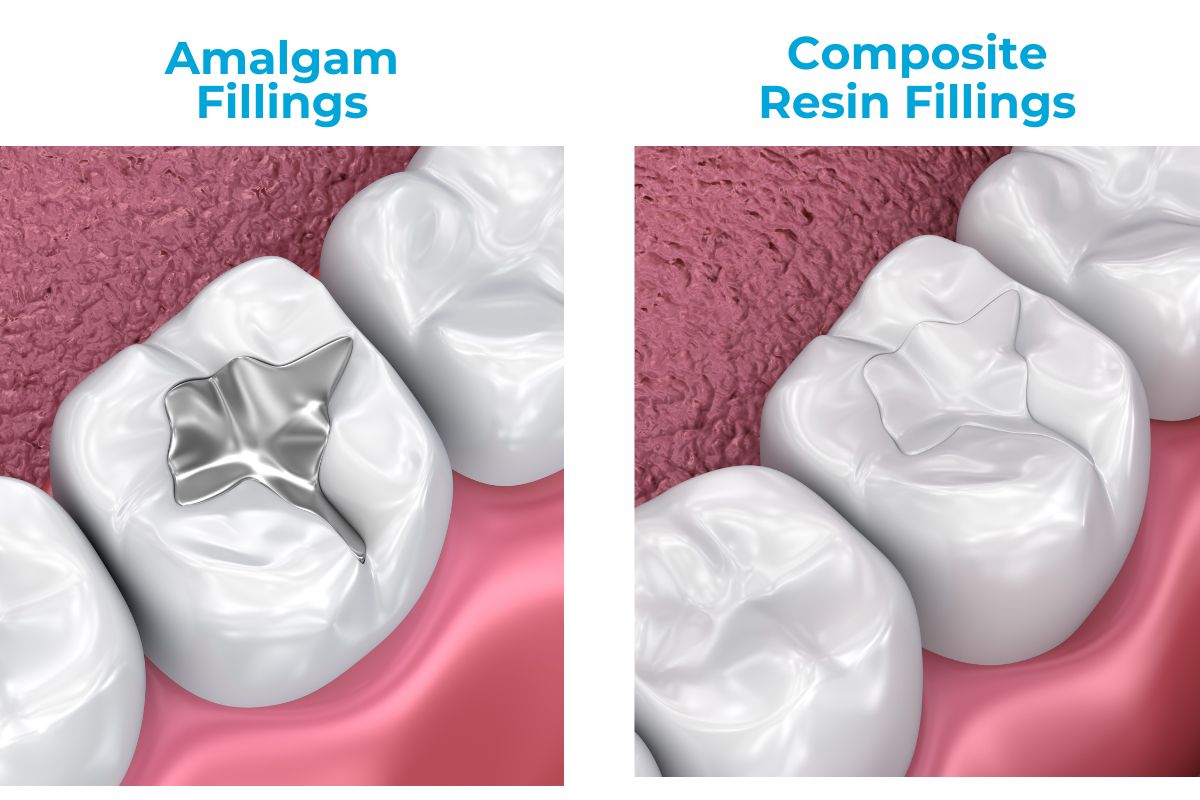Tooth Filling Aftercare: Read Our Comprehensive Guide

Like any other dental treatment cost, tooth fillings can get you scratching your head, especially if not taken care of properly.
Thus, it's essential to follow your dentist's instructions to ensure you’re making the most out of what you’ve paid for. That means maintaining proper oral hygiene, avoiding activities that would damage your fillings, and frequently visiting your dentist.
Nevertheless, the basic things you need to do to take care of your tooth filling can be done in the comfort of your home.
In case you need a comprehensive guide, read this article. Swear you won't worry about going back to the dentist because of a broken or aching tooth filling.
What to Expect After a Tooth Filling Procedure
You may experience tooth sensitivity and pain a few hours after the dental filling. Your gums might be a little swollen as well.
The pain will usually subside within a week, while sensitivity may take two to four weeks. It is normal, so you don't have to worry about this. There are some ways to manage it, even without visiting your dentist more frequently.

Tooth Filling Aftercare Tips: Managing Pain and Sensitivity
Dental fillings often require drilling further inside the tooth, especially in cases wherein necrotic tissues caused by cavities need to be removed. This means going close to the tooth's nerve endings. When this happens, heat and friction from the dental drill can irritate the nerves, thus causing tooth sensitivity or pain.
The good news is that as the nerves heal, the sensitivity eventually disappears. To help you manage pain and sensitivity, you can follow these tips:
Rinsing salt water
Rinsing with salt water can soothe the area where you feel pain. Saltwater also contains anti-inflammatory and anti-septic properties that promote healing. Experts recommend rinsing at least three times a day.
Here are the step-by-step instructions on making a saltwater rinse.
Step 1. Prepare 8 ounces of water and a teaspoon of salt.
Step 2. Combine the water and salt.
Step 3. Stir the water and salt mixture and bring them to a boil.
Step 4. Let the saltwater cool to a warm temperature.
Note: If your mouth is tender and you feel stung while rinsing, you should decrease the salt to ½ teaspoon for the first one to two days.
Take Over-the-counter Medication
As soon as the effect of the anesthesia is gone, you will start to feel the pain and sensitivity. Nonsteroidal anti-inflammatory drugs may be an option to relieve these sensations. A word of caution, though.
Taking such medications without the proper guidance of your dentist can lead to adverse side effects. If you are sensitive to NSAIDs, better inform your doctor.
Take desensitizing toothpaste
Using tooth-whitening products, such as regular toothpaste, can increase tooth sensitivity. These products often contain chalk or silica, causing them to be more abrasive or acidic.
But it doesn’t mean that you should stop brushing your teeth. It would be the worst thing you can do while recovering from a tooth-filling treatment. Instead, use a desensitizing toothpaste.
It contains potassium nitrate that protects the nerve ending of your teeth from irritants. It also has minerals that make your teeth stronger.
Certain Habits to Avoid for Filling Protection
While fillings can last up to ten years, they are not impervious to extreme pressure or force. They can come loose, break, crack, or fall out.
Therefore, avoiding things or habits that might cause your fillings to weaken might save you all the trouble. When you just had your tooth filled, you should refrain from:
- Grinding your teeth
- Biting hard objects such as fingernails, pens, and pencils.
- Eating hard (e.g., nuts, candies) and chewy/sticky foods (e.g., gum, dried fruits)
Monitoring the Filling
The dental treatment process doesn’t stop after the tooth filling. A basic tooth aftercare technique is to be your dentist (figuratively speaking).
As you recall all the dos and don’ts your dentist told you, try to put yourself in your doctor’s position. How would you guide yourself throughout the healing process?
For example, tooth sensitivity and pain are common, but their persistence might indicate more serious problems. Would your dentist give the benefit of the doubt?
Tooth sensitivity can also be caused by an allergic reaction or pulp inflammation called pulpitis. Thus, taking the necessary steps to address these early signs will help you avoid further filling-related problems.
Cracks and chips on your fillings are obviously not good signs. These cracks create an opening in your tooth where bacteria can penetrate. If not addressed immediately, the bacteria may reach the pulp of your tooth. This situation may lead to infection or other severe damage. If this happens, treatment such as a root canal, dental implant, or tooth extraction may be inevitable.
You must monitor other things, such as loose fillings and tooth discoloration. For instance, a sudden change in tooth color might mean a filling is leaking and might not have been appropriately sealed, becoming loose over time.
If you notice that you have any of these signs, seek professional help as soon as possible.

Maintaining Good Oral Hygiene
With all the advancements in dental science, nothing beats an old but gold oral health practice: maintaining good oral hygiene. However, that’s an overstatement that’s beginning to sound like an understatement.
Here’s why.
According to a New York Post article, a study into the dental hygiene habits of 2,000 Americans found three in ten millennials only brush their teeth once a day.
Ironically, over half of those polled (56 percent) worry about losing teeth due to
oral health.
Good oral hygiene cannot be taken out of the equation, whether you are simply taking care of your teeth and mouth or protecting a recently performed dental treatment. Like any other dental work, dental fillings also require doing the bare minimums like brushing your teeth, flossing, or using mouthwash. (Not to mention proper diet)

Following Up with the Dentist
This might sound preposterous, but your dentist must be the last person who would want to see you again. Unfortunately, things don’t work that way in real life.
But before judging dental health professionals, remember that dentists also aim to keep their patients from coming back to their offices due to repeated treatment or lingering teeth issues.
Similarly, they also have the sworn duty to guide you before and after your treatment. That said, it is also your responsibility to participate in this joint effort to protect and maintain good oral health.
So, when you talk about tooth filling aftercare, regular dental check-ups are as important as the first dental appointment. Research shows that patients who often have dental check-ups show better oral health and fewer tooth loss and cavity.
It is recommended to have a dental appointment at least twice a year. However, the number of times you should visit a dental office may vary depending on your habits, hygiene, and teeth health.
Final Thoughts
In summary, taking care of your tooth fillings doesn't have to be daunting. By following these aftercare tips, you can ensure that your fillings remain strong and healthy, protecting your teeth for years to come.
From brushing and flossing regularly to avoiding sticky or hard foods, the steps you take to care for your fillings will pay off in the long run.
With proper care, you can keep your fillings in top shape, helping you to maintain a confident, healthy smile. So go ahead and give your fillings the attention they deserve, and enjoy the benefits of a strong and healthy smile.
Got More Questions About Tooth Filling Aftercare?
Maximize your tooth filling recovery and achieve optimal oral health by visiting your dedicated dental health partners at Culver City Dentist United Dental Care.





